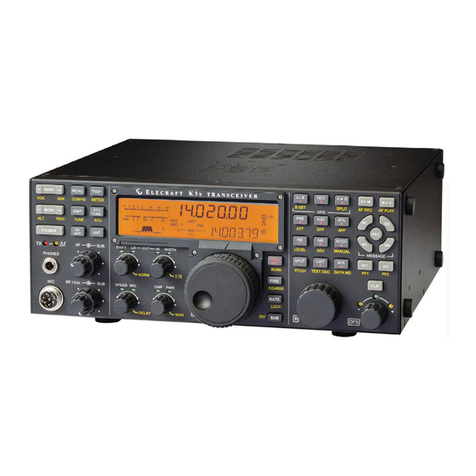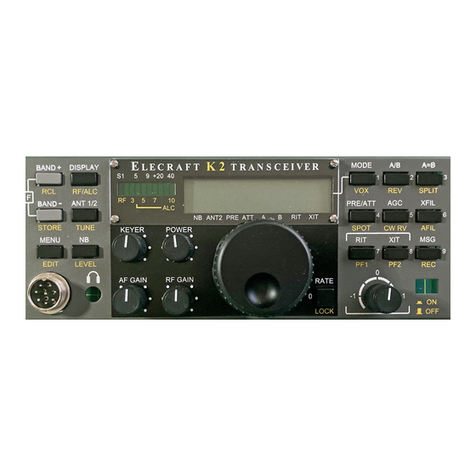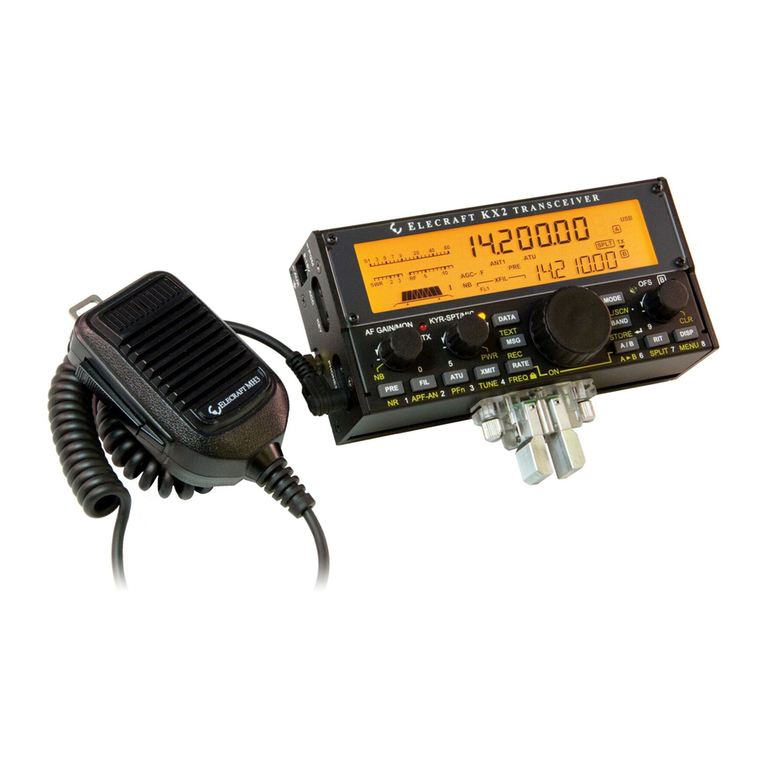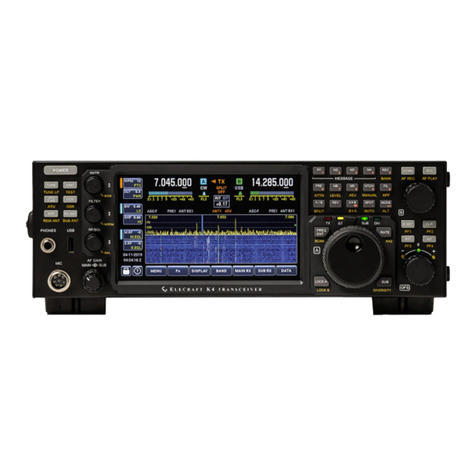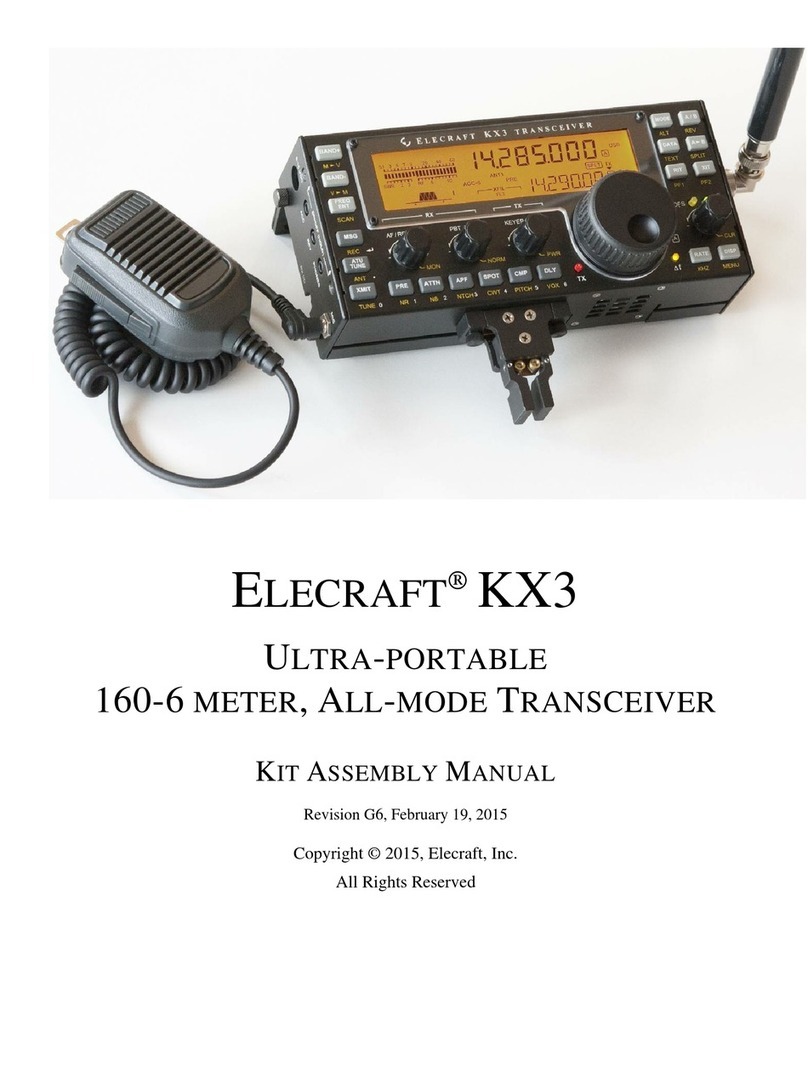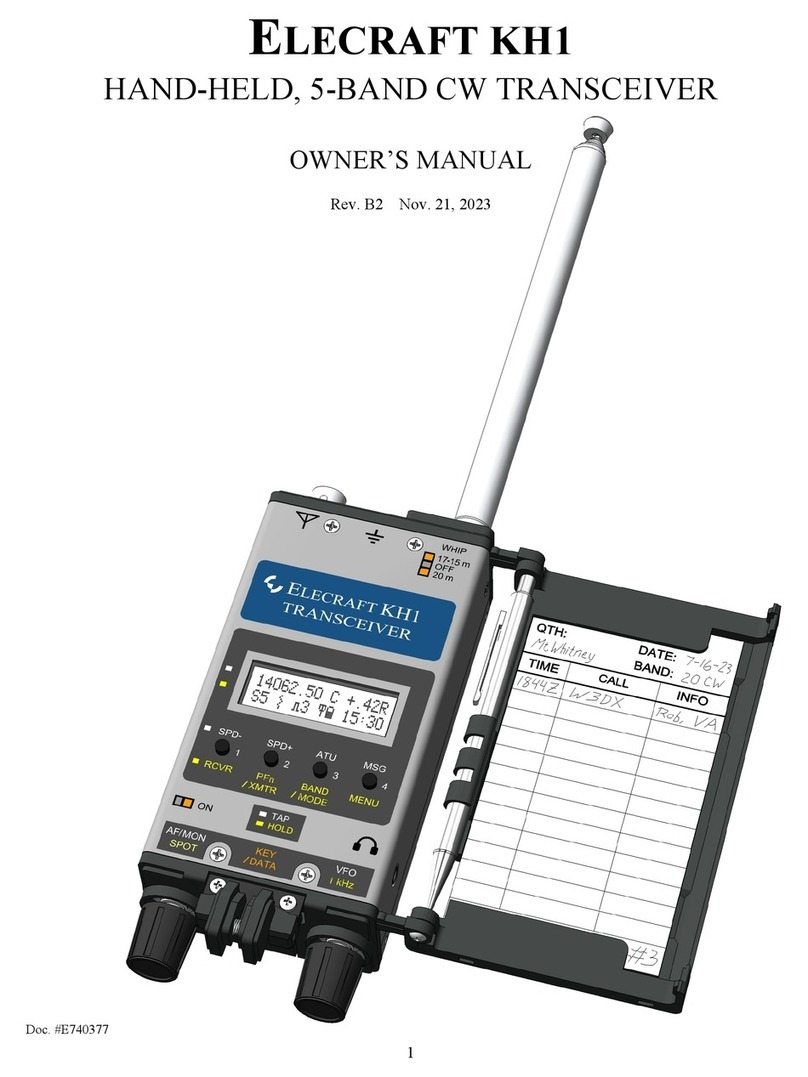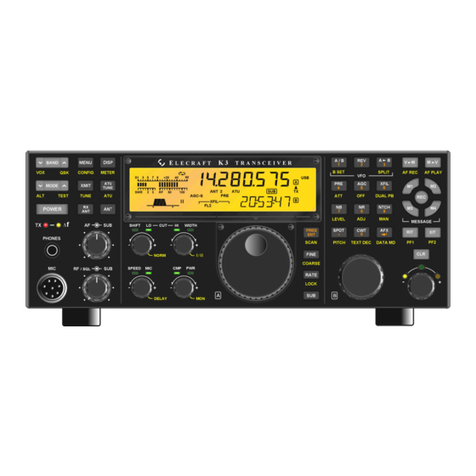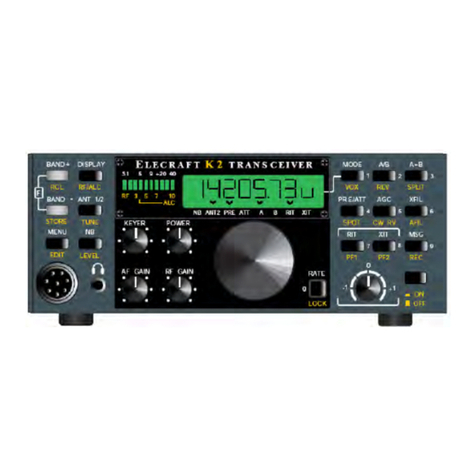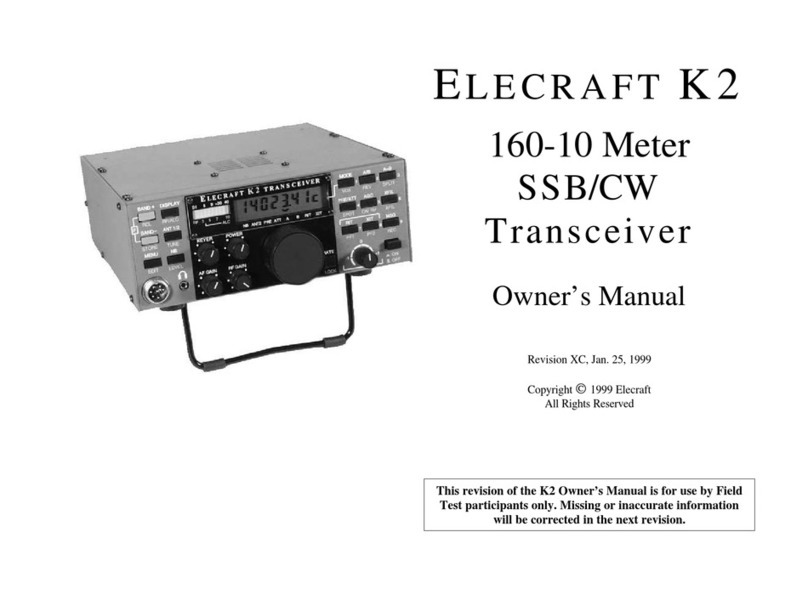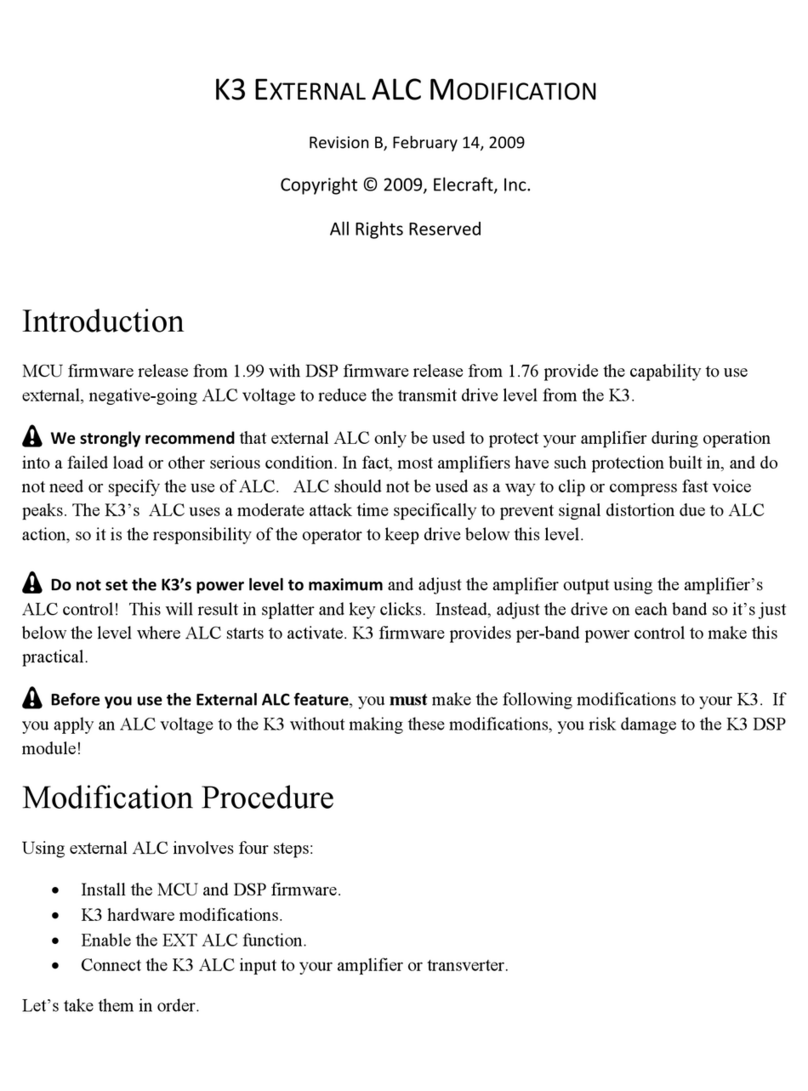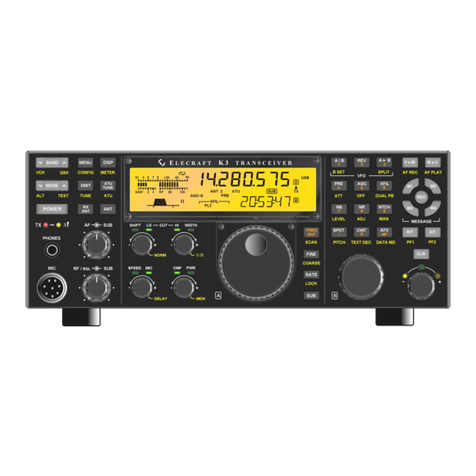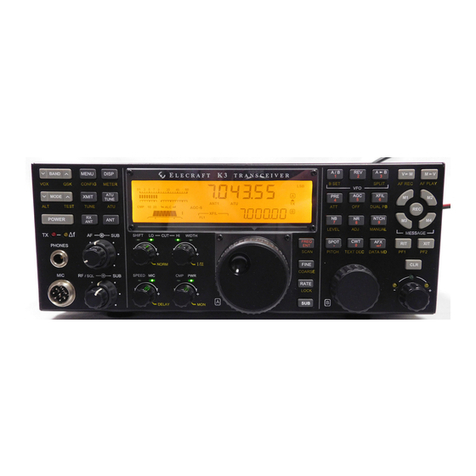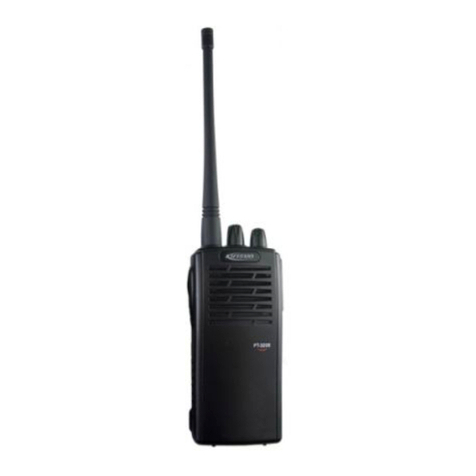
•Connect a power supply to the DC input jack {26} (see Specifications, pg. ??).
•On the K3/100, a circuit breaker is provided on the fan panel for the 100-W stage {30}.
Low-power circuitry is protected by an internal self-resetting fuse.
•You can power an accessory device from the switched DC output jack {38} (0.5 A max).
•Connect an antenna to ANT1 {29}. If you have an ATU installed (pg. ??), you can connect
a second antenna to ANT2 {28}. AUX RF {27} is for use with the subreceiver (pg. ??).
•See page ?? for a full description of the K3’s rear-panel connectors.
•Press P O W E R {5} to turn on the K3. If there are any error indications, refer to page ??.
•T A P and H O L D Functions: Tapping briefly activates the function labeled on a switch.
Holding for about 1/2 second activates the function labeled beneath a switch.
•Tap either end of BAND {7} to select a band, and M O D E {6} to select the mode. Set the
AF gain using AF {2}. Set RF to max. Set S U B A F to min (pg. ??).
•The large knob {22} controls VFO A (upper display, {10}). The medium knob {19}
controls VFO B (lower display, {11}). VFO A is main RX/TX except in SPLIT (pg. ??).
•C M P / P W R is one of four multifunction controls {24}. Each has two primary
functions, indicated by the green LEDs above them. Tap the knob to select the desired
function, in this case C M P (speech compression level) or P W R (power output in watts).
Hold the knob to activate its secondary function, in this case M O N itor level.
•Rotate the SHIFT / LOCUT and HICUT / WIDTH controls {23} to adjust the filter
passband. Crystal filters FL1-FL5 are automatically selected as you change the
bandwidth. Tap either knob briefly to alternate between shift/width and hicut/locut.
•Hold SHIFT / LOCUT to N O R M alize the bandwidth (e.g., 400 Hz CW, 2.8 kHz SSB).
•Hold HICUT / WIDTH to alternate between two filter setups, Iand II (per-mode).
•Tap X F I L {13} to select crystal filters manually; this also removes any passband shift.
•Hold M E T E R {8} to select C M P / A L C metering. Set MIC {25} for 4-7 bars of ALC,
and CMP for the desired compression. Then return to S W R / P W R . (Pg. ??.)
•Optional: Hold T E S T {6} for TX TEST; allows off-air adjustment (TX icon flashes).
•Hold CMP / PWR {24} to set speech M O N itor level; tap to return to C M P / P W R .
•Hold V O X {7} to select PTT or V O X . Hold SPEED / MIC to set VOX D E L A Y .
•Additional details: VOX (pg. ??), TX EQ (pg. ??), MIC (pg. ??), AM & FM (pg. ??).
•SPEED {25} sets the CW keyer speed. Hold this knob to set semi-break-in D E L A Y .
Hold Q S K {7} to select full break-in (Q S K icon on) or semi-break-in. (Pg. ??.)
•Hold P I T C H {18} to set sidetone pitch. Hold CMP / PWR to set sidetone M O N level.
•Tap C W T {18} to enable tuning aid {9}. With C W T on, S P O T auto-tunes CW signals.
•To select CW text decode/display mode, hold T E X T D E C {18}, then rotate VFO B.
•CW keying is converted to DATA in FSK D and PSK D modes (below and pg. ??).
•Hold D U A L P B {13} to turn CW dual-passband receive mode on or off (pg. ??).
•Hold D A T A M D {18}. Use VFO B to select from: D A T A A (PSK31 & miscellaneous
soundcard-based modes), A FS K A (soundcard-based RTTY), FSK D (RTTY via
data input or keyer), or PSK D (PSK via data input or keyer). VFO A selects baud rate
for internal text decoder, if applicable. Additional details on DATA modes: pg. ??.
•Hold P I T C H {18} to select mark tone and shift (for decoder and dual-tone filter).
•Hold T EX T DE C {18} to turn on RTTY or PSK31 text decode. Tap C W T for tuning aid.

